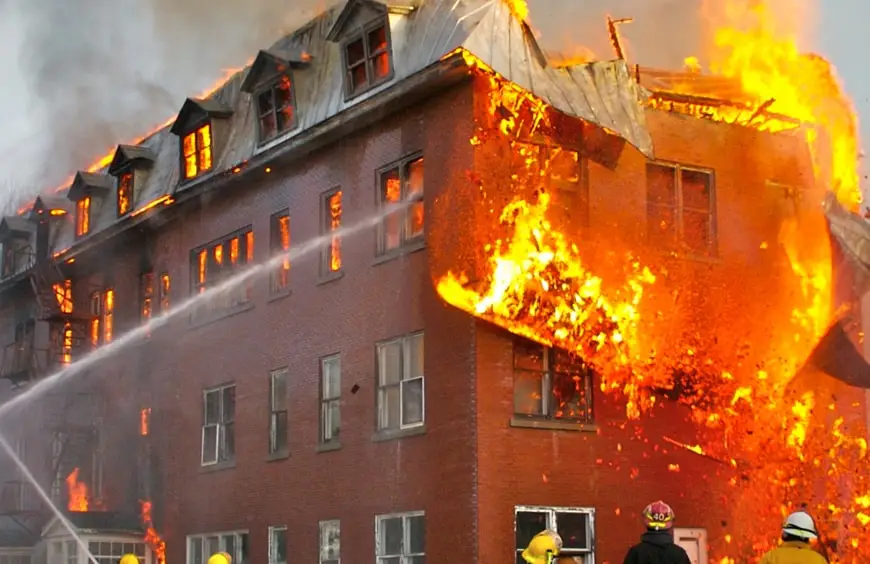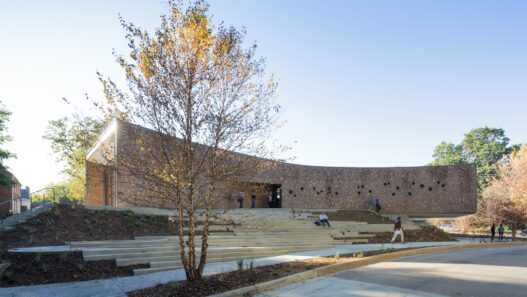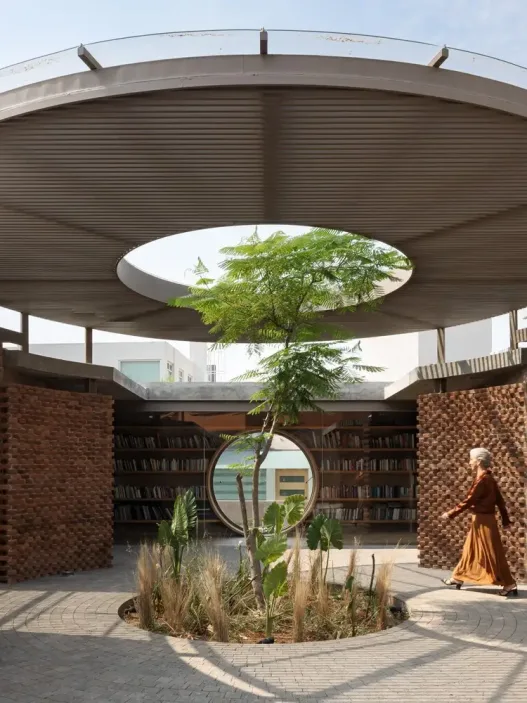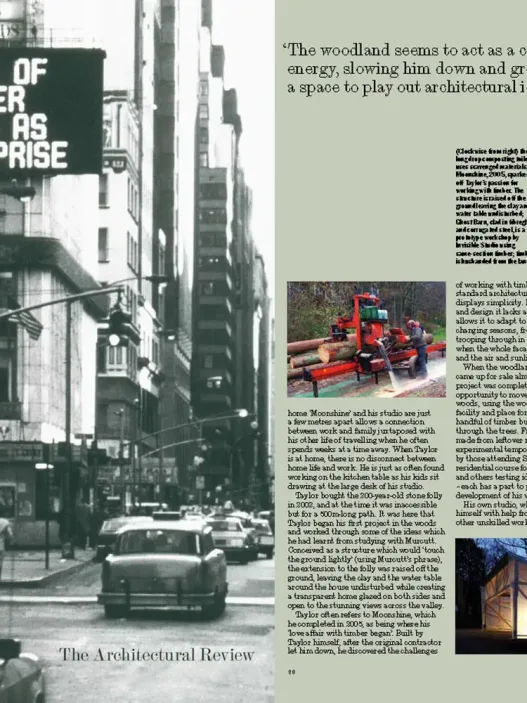In our constantly evolving built environment, the safety and durability of structures have become very important. Fire resistant materials play a crucial role in protecting buildings and their occupants from the devastating effects of fire. These materials are specifically designed to withstand high temperatures, block flames and minimise smoke production, making them essential in both residential and commercial construction. Understanding fire-resistant materials includes studying their definition, historical significance, various types, urban importance, and the latest developments in materials science.

Definition and Purpose
Fire resistant materials are materials designed to withstand combustion and high temperatures. Their primary purpose is to delay the spread of fire, providing critical extra time for the evacuation of building occupants and the response of firefighters. This resistance can take the form of insulating properties that protect structural components or coatings that prevent ignition. The effectiveness of these materials is often measured in terms of fire ratings, which indicate how long a material can withstand exposure to fire without losing its structural integrity.
Historical Context
The journey of fire resistant materials dates back centuries. Early civilisations recognised the dangers of fire and pioneered the use of natural materials such as stone and clay in construction. The Great Fire of London was an important moment that underlined the need for fire safety in urban planning and architectural design. This tragedy led to the introduction of building regulations that mandated the use of fire-resistant materials. Over the decades, advances in technology have changed the fire safety landscape, with modern materials such as plasterboard and fire retardant-treated wood becoming commonplace in construction applications.
Types of Fire Resistant Materials
Fire resistant materials can be categorised into various types, each serving specific purposes. Concrete, a basic material in construction, is inherently fire resistant due to its composition. It can withstand high temperatures without collapsing, making it ideal for structural components. Although steel is strong, it can lose its integrity under extreme heat. For this reason, it is often coated with fire-resistant materials to improve its performance. Furthermore, insulation materials such as mineral wool or fibreglass are designed to resist flames while providing thermal protection. There are also innovative coatings and intumescent paints that expand when exposed to heat, creating a protective barrier against flames. Each type of material has unique properties that contribute to overall fire safety.
Importance in Urban Environments
In urban environments, the density of buildings and the proximity of structures to each other make fire-resistant materials even more critical. Cities face unique challenges, such as the risk of fire spreading rapidly from one building to another. The use of fire-resistant materials not only protects individual buildings, but also entire neighbourhoods. For example, during forest fires, it has been shown that houses built with fire-resistant materials have significantly higher survival rates. Furthermore, building codes in urban areas often require these materials to be used in high-rise buildings where evacuation can be complex and time-sensitive.
Current Trends in Materials Science
As technology advances, so does the field of materials science, especially in the area of fire resistance. Researchers and engineers are constantly searching for innovative solutions to improve fire safety. Biomaterials derived from renewable resources are emerging as sustainable alternatives to traditional fire-resistant materials. In addition, smart materials are being developed that can respond to fire conditions, potentially providing real-time data to improve safety measures. As the construction industry moves towards reducing its environmental impact, the integration of fire resistant materials with sustainable building practices is becoming increasingly important. This combination of safety and sustainability reflects a broader trend in architecture and urban planning where fire resistance is harmonised with ecological responsibility.
Consequently, fire-resistant materials are vital in ensuring the safety and durability of buildings. The evolution, importance and ongoing innovation of these materials emphasise the importance of prioritising fire safety in architectural design, particularly in densely populated urban areas. Looking to the future, continued advances in materials science promise to improve our ability to protect lives and property from the threat of fire.
Architectural Considerations
Architecture is much more than the art of building; it represents a blend of creativity, functionality and environment. As we explore various aspects of architectural considerations, we uncover the principles, aesthetics, regulations and future trends that shape our built environment. Each element plays an important role in creating spaces that are not only visually appealing, but also functional and sustainable.
Design Principles
At the heart of architecture lie fundamental design principles that guide architects in their creative process. These principles include balance, proportion, rhythm and harmony. Balance refers to the distribution of visual weight within a building. An architect can achieve this through symmetrical designs where elements are mirrored or asymmetrical arrangements that create dynamic tension.
Proportion is vital to ensure that different parts of a building relate harmoniously to each other and to the overall structure. For example, the height of windows compared to the width of walls can significantly influence how a building feels. Rhythm, achieved through the repetition of shapes and patterns, guides the eye through a space, creating a sense of movement and flow. Finally, harmony links all the elements together, making the building feel harmonious and unified.
These principles are not just theoretical; they find real-world application in iconic buildings. Consider the Parthenon in Greece, where balance and proportion create a sense of timeless beauty. Modern architects also apply these principles, as seen in the works of Frank Lloyd Wright, who emphasised harmony with nature through organic architecture.
Integration with Aesthetics
In architecture, aesthetics refers to the visual beauty and emotional impact of a space. Integrating aesthetics into design goes beyond mere appearance; it involves creating an environment that resonates with people. This includes consideration of colour, texture, form and light. The right combination can evoke feelings of warmth, excitement or calm.
For example, the Guggenheim Museum in Bilbao, designed by Frank Gehry, shows how innovative forms and materials can challenge traditional aesthetics. Its fluid, organic shapes invite discovery and curiosity, transforming the way people experience art and architecture. Similarly, the use of natural materials such as wood and stone can create a sense of connection with the environment, as seen in the work of Tadao Ando, who integrates simplicity and elegance into his designs.
The integration of aesthetics is crucial not only for visual appeal, but also to enhance the functionality and experience of a space. A well-designed office building can increase productivity and morale, while a thoughtfully designed home can promote relaxation and comfort.
Building Codes and Regulations
Building codes and regulations are crucial in ensuring safety, durability and accessibility in architectural design. These codes vary by location and address various aspects including structural integrity, fire safety, plumbing and electrical systems. They also apply accessibility standards to ensure that buildings are suitable for everyone, including people with disabilities.
Understanding these regulations is vital for architects at the design stage. For example, in the United States, the International Building Code (IBC) provides guidelines that architects must follow. These rules not only protect building occupants, but also help preserve the aesthetic and cultural character of communities.
Building codes can be complex to navigate, but it is necessary to create spaces that are both innovative and harmonious. Consider the use of sustainable materials and energy-efficient systems; many jurisdictions now have specific regulations that encourage green building practices. This shift towards sustainability shows how regulations can evolve to meet contemporary needs.
Case Studies of Successful Designs
The study of successful architectural designs provides valuable insights into the application of principles and the integration of aesthetics. The Sydney Opera House in Australia is a notable example. Its iconic sail-like structure not only served a functional purpose as a performance venue, but also became a symbol of the city itself. The design process involved extensive experimentation with form, resulting in a building that harmonises with its waterside setting.
Another inspiring example is the High Line in New York, where a former elevated railway has been transformed into a public park. This project exemplifies how architecture can redesign urban spaces and blend nature with urban life. Incorporating native plants and walkways, the design creates a green oasis and encourages community interaction.
These case studies demonstrate the power of thoughtful design and the impact of architecture on urban environments and cultural identity. They remind us that successful architecture is not only about buildings, but also about the experiences they create.
Future Architectural Trends
Looking to the future, several trends are emerging that will shape the landscape of architecture. Sustainability remains at the forefront; architects are increasingly focusing on energy-efficient designs and eco-friendly materials. The concept of biophilic design, which aims to connect people with nature, is gaining traction by promoting well-being and ecological harmony.
Furthermore, technology is transforming architecture in an unprecedented way. The use of Building Information Modelling (BIM) allows architects to visualise and simulate their designs in a virtual environment, increasing collaboration and efficiency. Smart buildings equipped with sensors and automation systems are becoming increasingly common, optimising energy use and improving occupant comfort.
Another important trend is the emphasis on community-centred design. Architects are realising the importance of creating spaces that encourage social interaction and inclusion. This shift reflects a broader understanding of the role of architecture in improving quality of life and addressing social issues.
As a result, architectural considerations encompass a rich tapestry of design principles, aesthetic integration, regulatory frameworks, successful case studies and future trends. By exploring these elements, we can appreciate the complexity and beauty of architecture as well as its profound impact on our lives and the environment.
Benefits of Fire Resistant Materials
In the field of architecture and construction, the choice of materials can profoundly affect the safety, longevity and sustainability of a building. Fire-resistant materials are designed to withstand high temperatures and prevent the spread of fire, and their benefits extend far beyond mere compliance with building codes. Understanding these benefits can help architects, builders and homeowners make informed decisions that improve safety, reduce costs and contribute to a more resilient society.
Enhanced Safety Measures
The primary advantage of fire resistant materials is the enhanced safety they provide. Fire is unpredictable and can spread rapidly, posing a significant risk to life and property. Buildings can better withstand flames and heat by combining materials such as concrete, brick and some treated timbers. These materials do not ignite easily and help to control the fire, giving occupants more time to evacuate and firefighters more time to respond. For example, a high-rise building clad with fire-resistant materials can significantly reduce the risk of fire spreading from one floor to another, ultimately protecting lives and minimising property damage.
Furthermore, fire-resistant materials contribute to overall building integrity during a fire. Structures using these materials are less likely to collapse and provide safer environments for both occupants and first responders. This enhanced safety measure is not just a theoretical benefit; in emergency situations it can be the difference between life and death.
Insurance and Liability Considerations
The use of fire-resistant materials can also have a positive impact on insurance costs and liability considerations. Insurance companies generally regard buildings constructed with fire-resistant materials as lower risk, which can lead to lower premiums. This financial incentive makes it more attractive for property owners to invest in these materials upfront.
Also, in the event of a fire, having fire-resistant materials can reduce legal liabilities. If a building was constructed with safety in mind, it shows a commitment to protect occupants and property. This can be crucial in legal proceedings following a fire, as it shows that building owners have taken reasonable steps to prevent fire-related incidents. Overall, the financial and legal benefits of using fire-resistant materials can provide peace of mind for both homeowners and investors.
Long Term Cost Savings
Although fire-resistant materials may have a higher initial cost, they often provide significant savings in the long term. Buildings that are less susceptible to fire damage require less frequent repairs and renovations, which can accumulate over time. Furthermore, the cost of rebuilding or repairing a structure after a fire can be astronomical, not to mention the potential loss of personal possessions and emotional distress.
Moreover, fire-resistant materials can increase the overall durability of a building. For example, concrete not only resists flames, but also offers excellent protection against weathering, pests and rot. This durability means that buildings require less maintenance and last longer, ultimately saving money in the long run. Property owners may view the initial investment in fire resistant materials as a strategic decision that pays off in reduced operating costs and increased property value.
Environmental Impact
The choice of fire-resistant materials can also have a positive impact on the environment. Many fire resistant materials such as stone, brick and certain types of glass are produced from natural resources and can be sustainably sourced. Using these materials, especially when they are sourced locally, can reduce the carbon footprint of a building project and minimise transport emissions.
In addition, fire-resistant materials often contribute to energy efficiency. Buildings that are better insulated against heat loss or heat gain can lead to less energy consumption for heating and cooling. This not only reduces the utility bills of building occupants, but also contributes to a more sustainable future by reducing overall energy demand. Architects and builders can support both safety and environmental management by choosing fire-resistant materials.
Social Resilience
The use of fire-resistant materials goes beyond individual buildings; it plays a vital role in increasing community resilience. In areas prone to wildfires or urban fires, communities that prioritise fire-resistant structures can reduce the overall risk to neighbourhoods. Buildings designed with these materials can act as fire breaks, slowing the spread of flames and providing safe havens for people and wildlife.
Moreover, when entire communities adopt fire-resistant construction methods, collective safety is enhanced. Emergency services can respond more effectively when they know that buildings in a particular area are less likely to contribute to the spread of fire. This proactive approach promotes a culture of preparedness and resilience, enabling communities to recover more quickly after disasters. As a result, the benefits of fire-resistant materials go beyond individual buildings, contributing to the safety and sustainability of entire neighbourhoods.
In summary, fire-resistant materials offer numerous benefits that increase safety, reduce costs and promote environmental sustainability. By understanding and adopting these materials, architects, builders and homeowners can create safer, more durable and timeless structures.
4. Implementation Challenges
The realisation of architectural designs and concepts requires navigating a complex world of challenges. These obstacles can arise from financial constraints, material availability, labour availability, public attitudes and regulatory environments. Understanding these challenges is crucial to successfully realising architectural visions.
Cost Factors
When it comes to building and design, costs are often the first hurdle architects and developers face. The financial implications of a project go beyond the initial budget to include ongoing maintenance, operating expenses and possible future renovations. For example, sustainable building practices, while beneficial in the long term, often require significant upfront investment. This can deter stakeholders who may prioritise immediate cost savings over future benefits.
In addition, fluctuating material prices can significantly impact project budgets. For example, steel or timber prices may unexpectedly rise during periods of high demand, leading to budget overruns. Architects should not only plan for these costs, but also communicate effectively with clients and stakeholders about the value of investing in quality materials and sustainable practices, emphasising long-term savings and environmental benefits.
Availability of Materials
The availability of construction materials can be a significant challenge in the architectural field. Architects often design according to their own vision, but the scarcity or back-ordering of necessary materials can lead to delays or forced changes in design. This is particularly common in regions where natural disasters occur or access to certain resources is limited.
For example, in areas where local timber is not available, architects may have to use imported materials, which can increase costs and lead to longer lead times. Switching to sustainable materials, such as recycled or locally sourced options, can also be hindered by availability issues. Architects are therefore increasingly tasked with finding innovative solutions and alternative materials that are compatible with their designs and at the same time easily accessible.
Contractor Awareness and Training
Another practical challenge relates to the skills and awareness of contractors in modern architectural techniques and materials. As the industry evolves, so should the knowledge of those who realise the designs. Unfortunately, not all contractors are up to date with the latest technologies, sustainable practices or innovative construction methods.
For example, if an architect designs a building using advanced prefabrication techniques, a contractor unfamiliar with this approach may struggle to implement the plan effectively. This disconnect can lead to errors, increased costs and delayed timelines. Ongoing education and training programmes are essential to ensure that contractors are equipped with the skills and knowledge necessary to implement contemporary architectural practices. Co-operation between architects and contractors during the design phase can also promote better understanding and implementation.
Public Perception and Acceptance
Public perception plays a vital role in the success of architectural projects. Public acceptance can vary greatly depending on the aesthetics, functionality and perceived impact of a new building or development. For example, proposals for high-density housing in suburban areas often meet resistance from residents who fear that the character of their neighbourhood will change.
Architects and developers should communicate early and often with the community, providing clear information about new projects and addressing concerns. Successful examples of this include community workshops or public forums where stakeholders can voice their views and feel involved in the decision-making process. By encouraging a transparent dialogue, architects can help reduce resistance and build public support for innovative designs that may initially appear controversial.
Regulatory Barriers
Navigating regulatory frameworks is another major challenge faced in architectural practice. Building codes, zoning laws and environmental regulations can vary widely between jurisdictions, and compliance can be a daunting task. For example, a project that meets all local building codes may still face delays due to zoning restrictions that limit building height or density.
Moreover, the permitting process can be long and complex. Architects need to be well-versed in local regulations and often collaborate with legal teams to ensure compliance. In some cases this can lead to conflicts between innovative design and strict regulations, resulting in compromises that dilute the original vision. For architects aiming to implement their designs effectively while fulfilling legal requirements, it is crucial to be aware of and adapt to changes in legislation.
In conclusion, the challenges faced in realising architectural projects are significant but not insurmountable. By understanding these barriers and actively seeking solutions, architects and developers can navigate their way through the complexities of the construction environment to realise their vision.
5. Innovations in Fire Resistant Technology
Fire safety has always been a top concern in architecture and construction, as the destructive potential of fire can threaten lives, property and the environment. Recent innovations in fire-resistant technology are transforming the way buildings are designed and constructed, enhancing safety while promoting sustainability. This chapter examines emerging trends and developments in fire-resistant technology, focusing on materials, smart technologies, nanotechnology, construction techniques and future prospects.
Advanced Materials Research
Fire-resistant technology is based on advanced materials research. Scientists and engineers are constantly developing new materials that can withstand high temperatures and resist combustion. Traditional materials such as wood and some plastics are being replaced or treated with innovative compounds that increase their fire resistance. For example, intumescent coatings expand when exposed to heat, creating a protective layer of char that insulates the underlying material.
Furthermore, researchers are experimenting with composites that blend fire-resistant fibres such as aramid and glass to create lightweight yet durable materials. These innovations not only improve safety, but also allow for more versatile designs in architecture. Buildings can now have larger windows and open spaces, offering both aesthetic appeal and structural integrity without compromising fire safety. The use of these advanced materials is becoming increasingly important in high-rise buildings where the risk of fire can have devastating consequences.
Smart Technologies in Fire Safety
The integration of smart technologies into fire safety systems is revolutionising our approach to fire prevention and response. Smart sensors can detect changes in temperature, smoke and other fire indicators long before traditional systems can respond. These sensors communicate with building management systems, allowing real-time monitoring and alerts. This not only improves response times, but also increases overall building safety.
In addition, smart technologies enable automated responses to fire hazards. For example, some systems can automatically activate sprinklers, close fire doors and even direct occupants to safety through digital signage. The use of artificial intelligence in predictive analytics further enhances safety by identifying patterns that can lead to fire hazards, allowing proactive measures to be taken before a fire occurs. This shift towards intelligent systems represents a significant leap forward in fire safety engineering.
The Role of Nanotechnology
Nanotechnology plays an important role in the development of fire resistant materials and coatings. By manipulating materials at the molecular level, researchers can create materials that exhibit remarkable properties against fire. For example, nanomaterials can increase the thermal stability of polymers, making them less likely to ignite and more effective against heat.
One notable application is the use of nanocomposites that add nanoparticles to conventional materials to improve their fire performance. These composites can significantly reduce flammability while maintaining the strength and flexibility of the material. In practical terms, this means that everyday items such as furniture, textiles and construction materials can be made safer without compromising on quality or design. As nanotechnology continues to develop, its applications in the field of fire safety will likely expand and offer even more innovative solutions.
Innovations in Construction Techniques
The way buildings are constructed is also undergoing significant changes due to innovations in fire safety technology. Modular construction, which involves prefabricating parts of a building off-site, provides better quality control and consistency in fire-resistant properties. This approach not only speeds up the construction process, but also ensures that fire safety measures are seamlessly integrated into the design from the outset.
Furthermore, traditional construction practices are being re-evaluated in the light of new fire safety standards. Techniques such as the use of fire barriers – barriers designed to slow or stop the spread of fire – are becoming standard practice in new developments. Architects and engineers are now collaborating more closely to ensure that fire safety is a primary consideration at the design stage, resulting in buildings that are not only aesthetically pleasing but also structurally sound and fire resistant.
Future Prospects in Fire Safety Engineering
Looking to the future, we see that the field of fire safety engineering is poised for continuous innovation. Advances in technology, materials science and construction practices will further enhance the safety of buildings and occupants. The continued development of predictive modelling tools will allow engineers to simulate fire scenarios and test the effectiveness of various fire-resistant technologies before construction begins.
Furthermore, the integration of sustainability into fire safety practices is gaining momentum. As the world prioritises environmentally friendly solutions, fire resistant materials that are also sustainable will become increasingly important. In the future, the combination of fire safety, environmental responsibility and advanced technology will result in safer and more durable structures that can withstand the challenges of a changing world.
In summary, innovations in fire-resistant technology are transforming the architectural landscape and providing new ways to protect life and property. By embracing advanced materials, smart technologies, nanotechnology and innovative construction techniques, we are moving towards a future where fire safety is seamlessly integrated into the fabric of our built environment.
6. Suggestions for the Future
As we come to the end of our research on fire safety, urban development and sustainability, it is becoming clear that the integration of these elements is vital to creating environments that protect lives while promoting growth and resilience. This chapter aims to summarise key insights, highlight the importance of policy, advocate sustainable practices and envisage a collaborative future for urban areas.
Summary of Key Points
Throughout our discussion, we examined the multifaceted nature of fire safety and its implications for urban architecture. We emphasised the critical role that design plays in preventing fire hazards and providing safe evacuation procedures. We also examined how modern materials and technologies can improve fire resistance and enhance safety protocols. The importance of continuing education and training for professionals in the field was also emphasised, showing how proactive measures can reduce risks in both new and existing structures. In conclusion, the intersection of fire safety and urban planning offers a path to safer and more resilient communities.
The Role of Policy in Improving Fire Safety
Policies form the backbone of effective fire safety measures. They create regulations governing building codes, land use and emergency response protocols. Strong policies can lead to the development of safer urban areas by requiring fire-resistant materials in construction, requiring regular safety inspections, and ensuring that emergency services are adequately equipped. For example, cities such as San Francisco have implemented strict fire codes following historic disasters, leading to more resilient neighbourhoods. Looking ahead, it is crucial that policy makers work with architects, engineers and the community to create comprehensive strategies that prioritise fire safety in urban design.
Promoting Sustainable Practices
Sustainability is increasingly becoming a focal point in urban development, and this includes fire safety. By adopting green building practices, urban planners can create structures that not only minimise environmental impact but also improve fire safety. For example, using non-combustible materials and incorporating green roofs can significantly reduce fire risks while promoting biodiversity. Furthermore, integrating smart technologies to monitor fire hazards can lead to faster responses and better resource allocation. As cities strive for sustainability, it is crucial to remember that fire safety can and should be woven into the fabric of environmentally friendly design.
Urban Development Vision
Looking ahead, the vision for urban development should be one that embraces innovation while prioritising safety. Cities of the future should be designed with fire prevention as a core principle, incorporating advanced technologies, community engagement and sustainable practices. Imagine urban landscapes where buildings are equipped with smart fire detection systems, green spaces buffer against the spread of fire, and communities are trained and prepared for emergencies. This holistic approach not only protects lives, but also fosters resilient communities that can thrive in the face of adversity. By anticipating this future and working towards it, we can ensure that urban areas are safe, sustainable and liveable for future generations.





















